Filter by
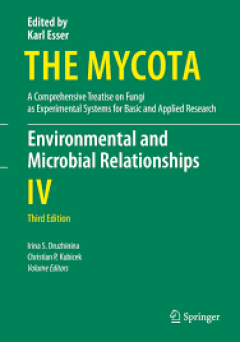
Environmental and Microbial Relationships
This volume provides insights into current research on fungal populations, communities and their interactions with other organisms. It focuses on fungal responses to the physical environment; interactions with bacteria, other fungi, invertebrates and plants; the role of fungi in ecosystem processes such as decomposition and nutrient cycling; and aspects of biogeography and conservation. Since …
- Edition
- -
- ISBN/ISSN
- 978-3-319-29532-9
- Collation
- 15 b/w illustrations, 25 illustrations in colour
- Series Title
- -
- Call Number
- -

Genetic Manipulation in Plants for Mitigation of Climate Change
This book presents a detailed overview and critical evaluation of the state of the art and latest approaches in genetic manipulation studies on plants to mitigate the impact of climate change on growth and productivity. Each chapter has been written by experts in plant-stress biology and highlights the involvement of a variety of genes/pathways and their regulation in abiotic stress, recent adv…
- Edition
- -
- ISBN/ISSN
- 978-81-322-2660-4
- Collation
- 3 b/w illustrations, 15 illustrations in colour
- Series Title
- -
- Call Number
- 630 Gen
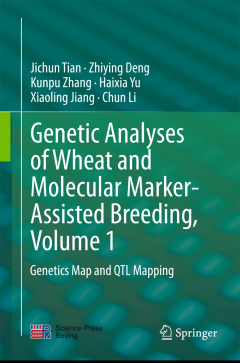
Genetic Analyses of Wheat and Molecular Marker-Assisted Breeding, Volume 1
The book mainly describes the QTL mappings and efficacy analyses that are associated with wheat productivity, quality, physiology and various stress resistances and provides summaries of results from studies conducted both at home and abroad. It presents comparable data and analyses, helping readers to arrive at a more comprehensive understanding of the latest development in this field. The boo…
- Edition
- -
- ISBN/ISSN
- 978-94-017-7388-1
- Collation
- -
- Series Title
- -
- Call Number
- 630 TJA g
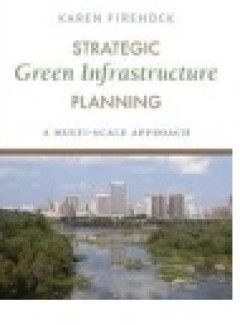
Strategic Green Infrastructure Planning
A practical guide to creating effective plans and then implementing them, Strategic Green Infrastructure Planning presents a six-step process developed by the Green Infrastructure Center in Charlottesville, Virginia. Each step, from setting goals to implementing opportunities, can be applied to a variety of scenarios, customizable to the reader's target geographical location. Chapters draw on d…
- Edition
- -
- ISBN/ISSN
- 978-1-61091-693-6
- Collation
- -
- Series Title
- -
- Call Number
- -

Nematode Pathogenesis of Insects and Other Pests:Ecology and Applied Technolo…
Achieving a sustainable agriculture requires integrating advances in multiples disciplines, covering both fundamental and applied research in a common objective: enhancing crop health for better productions. This first volume of the Series “Sustainability in plant and crop protection” presents a comprehensive and multi-disciplinary compendium about the recent achievements in the use of ento…
- Edition
- 1
- ISBN/ISSN
- 978-3-319-18266-7
- Collation
- XVII, 531
- Series Title
- Sustainability in Plant and Crop Protection
- Call Number
- -
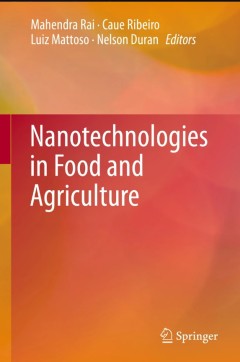
Nanotechnologies in Food and Agriculture
This book presents a comprehensive overview of new and emerging nanotechnologies. It includes aspects of nanoparticle monitoring, toxicity, and public perception, and covers applications that address both crop growing and treatment of agricultural wastewater. Topics include nanoagrochemicals (nanofertilizers, -pesticides, -herbicides), nanobiosensors, and nanotechnologies for food processing, p…
- Edition
- 1
- ISBN/ISSN
- 978-3-319-14023-0
- Collation
- XV, 347
- Series Title
- -
- Call Number
- -
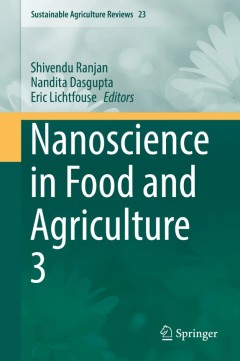
Nanoscience in Food and Agriculture 3
This book is the third volume on Nanoscience in Food and Agriculture, published in the Sustainable Agriculture Reviews series. In this book we present ten chapters describing the synthesis and application of nanomaterials for health, food, agriculture and bioremediation. Nanomaterials with unique properties are now being used to improve food and agricultural production. Research on nanomateria…
- Edition
- 1
- ISBN/ISSN
- 978-3-319-48008-4
- Collation
- XIII, 289
- Series Title
- Sustainable Agriculture Reviews
- Call Number
- -

Nanoscience in Food and Agriculture 2
This book is the second volume on this topic within the series. With unique properties, nanomaterials are rapidly finding novel applications in many fields such as food, medicine, agriculture and pollution. Such applications include to treat cancer, nanosensors to detect food contamination, nanomaterials for food packaging, nanoencapsulation to preserve nutraceuticals, and nanofertilisers for…
- Edition
- 1
- ISBN/ISSN
- 978-3-319-39305-6
- Collation
- XVII, 373
- Series Title
- Sustainable Agriculture Reviews
- Call Number
- -
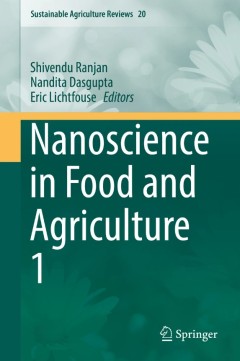
Nanoscience in Food and Agriculture 1
Nanotechnology is a fast-evolving discipline that already produces outstanding basic knowledge and industrial applications for the benefit of society. Whereas the first applications of nanotechnology have been developed mainly in material sciences, applications in the agriculture and food sectors are still emerging. Due to a rapid population growth there is a need to produce food and beverages …
- Edition
- 1
- ISBN/ISSN
- 978-3-319-39302-5
- Collation
- XIX, 324
- Series Title
- Sustainable Agriculture Reviews
- Call Number
- -
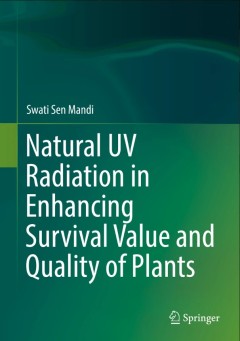
Natural UV Radiation in Enhancing Survival Value and Quality of Plants
This book is the first of its kind to highlight the positive impact of natural UV radiation on plants through unique adaptations in various metabolic pathways, and provides an evolutionary sketch of the development of molecular mechanisms for protecting plants from solar UV ever since their migration to terrestrial habitats. Experimental evidence is provided for establishing how plants, through…
- Edition
- 1
- ISBN/ISSN
- 978-81-322-2765-6
- Collation
- XIX, 204
- Series Title
- -
- Call Number
- -
 Computer Science, Information & General Works
Computer Science, Information & General Works  Philosophy & Psychology
Philosophy & Psychology  Religion
Religion  Social Sciences
Social Sciences  Language
Language  Pure Science
Pure Science  Applied Sciences
Applied Sciences  Art & Recreation
Art & Recreation  Literature
Literature  History & Geography
History & Geography